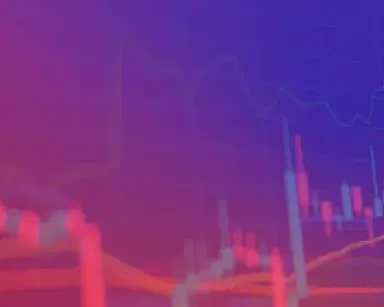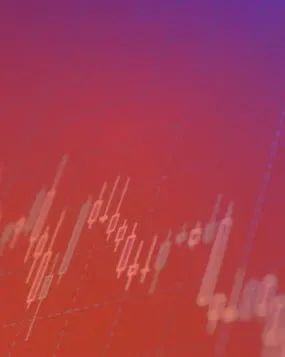- What is an options contract?
- Four basic options strategies
- When should you trade options?
- How to trade options
- FAQs
What is an options contract?
An options contract is an agreement that allows traders to buy or sell an underlying market at a specified price – known as the strike price – for a certain period of time. The contract’s value will ultimately depend on the difference between the option’s strike price and the value of the underlying when you close your trade.
For example, if you have an option to buy gold for $1,800 and gold is trading at $1,900 when you close your position, your contract can earn you $100 profit.
Find out what influences options pricing.
Options can be bought or sold at a price known as the premium at any time up until expiry. There are two types of options:
- Calls: these options increase in value when the underlying product rises, similar to a long underlying position. Call options are considered ‘in the money’ when the underlying market is trading above the contract’s strike price
- Puts: these options increase in value when the underlying product falls, similar to a short underlying position. Put options are considered ‘in the money’ when the underlying product is below the contract’s strike price
At expiration, only ‘in-the-money’ options will have any value, otherwise they are considered ‘out of the money’ and expire worthless.
See our full guide to options terminology.
An option can be bought or sold, resulting in a long or short option position. The buyer of an option agrees to pay a premium in exchange for a potentially unlimited payout when the value of the underlying product moves beyond the option strike price. The option buyer’s risk is limited to the premium amount – so regardless of what may happen in the market, your always know your maximum loss upfront.
However, the seller of an option has potentially unlimited downside – they are paid the premium to take on this risk.
Many traders like to think of options as insurance contracts, and this can be useful in understanding the major difference between long and short options. Purchasing options are very similar to buying insurance contracts. For example, you’d pay a set amount and then the insurance would payout a very large sum if certain parameters are met.
When a trader sells an option to open a short position, they are taking on the role of the insurance company and seeking to earn a profit by collecting the premium without having to make a large payout (hopefully).
What are the four basic options strategies?
As there are only two types of options (puts and calls), and you can be long or short either of them, this gives you four basic options strategies.
- Long call option: you pay a fixed premium for the right to buy a market at the strike price. Your profits are potentially unlimited; your maximum loss is limited to the option premium
- Short call option: you receive a fixed premium in exchange for agreeing to sell the underlying market at the strike price if the buyer executes the option. Your maximum profit is the premium - your potential loss is unlimited
- Long put option: you pay a fixed premium for the right to sell a market at the strike price. Your profits are potential unlimited - your maximum loss is limited to the option premium
- Short put option: you receive a fixed premium in exchange for agreeing to buy a market at the strike if the option buyer executes the contract. Your maximum profit is the premium; your potential loss is unlimited
Profit from a long option is unlimited in theory, as you can settle at a better price than your strike price. The loss to a short option is unlimited for the same reason, a buyer can execute their position at any price beyond the strike price and you’d be obliged to fulfil your end of the deal.
When should you trade options?
Trading options offers a broader range of possible outcomes compared to trading in underlying markets. Understanding when it’s best to use options compared to other instruments is vital to success. Let’s look at how a trader would approach various market sentiments in the FTSE index. The information provided here should not be considered personal advice.
- Extremely bullish view: ‘I believe the market is about to move much higher, and quickly’. In this case, they might buy FTSE call options for maximum leverage
- Somewhat bullish view: ‘I believe the market will climb, slowly and steadily’. Here, they might buy the FTSE with a different derivative – such as CFDs
- Mildly bullish to neutral: ‘I believe the market will remain relatively neutral’. In this case, they might sell FTSE put options to collect the premium
- Extremely bearish: ‘I believe the market is about to break much lower, and quickly’. Here, they might buy FTSE put options for maximum leverage
- Somewhat bearish: ‘I believe the market will fall, slowly and steadily’. In this case, they might sell the FTSE underlying market with a different derivative – such as CFDs
- Mildly bearish to neutral: ‘I believe the market will remain relatively neutral’. Here, they might sell FTSE call options to collect premium
How to trade options
You can trade options via CFDs in just a few quick steps:
- Learn how to trade CFDs
- Create an account with City Index
- Find the options market you want to trade
- Choose between a call or put option
- Open your position
- Monitor and close your trade
Find out how CFDs work and the benefits of trading derivatives
Get started trading on live markets, or practise trading first in a risk-free demo account
Use the search bar in our award-winning platform to quickly find your market
Decide whether you think the market will rise or fall, and choose a strike price to ‘buy’ or ‘sell’ at
Enter the market by clicking ‘place a trade’, you may want to consider adding a stop loss to your trade to manage your risk
Use analysis to stay up to date with any price movements and identify an exit point for your position








